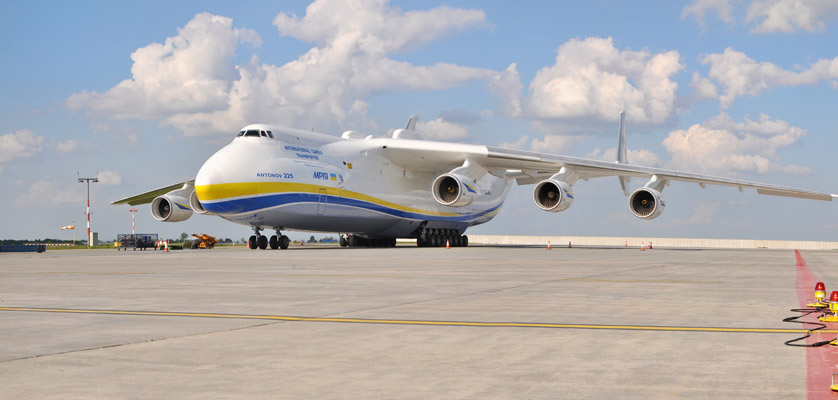The World's Biggest Plane
The world’s biggest plane looks set to be completed, 25 years after production was halted for political reasons. After production ground to a halt in 1994, engineers in Ukraine are in the process of making the Antonov An-225 - officially the biggest plane on the planet.
The Antonov Design Bureau of the Soviet Union designed and created the Strategic Airlift Cargo aircraft in the 1980s. Powered by six engines, it can take off with a maximum weight of 640 tons and is the heaviest and longest airplane of its kind ever constructed.
Unfortunately, the part-built plane has been sitting in an aircraft hangar since the demise of the Soviet Union. It is only 70% complete and has remained in storage in Ukraine for almost three decades.

© Josephnator / Shutterstock.com
History of the An-225
The construction programme began in 1989, but was halted in 1994, three years after funding dried up as a result of the collapse of the Soviet Union. It will cost an estimated £270 million to complete the aircraft. Now, the manufacturer, Antonov, aims to raise the necessary money to finish the construction.
If completed, the Antonov-225 will be an even bigger version of its predecessor, the 225 Mriya, which was constructed in 1985 and took its first flight in December 1988. The earlier aircraft could carry 250 tonnes of cargo and successfully completed a number of Soviet military missions.
The Mriya (Ukrainian for "dream") remains the biggest plane in history. Designed as part of the Soviet Union's space programme, it can carry a space craft, 30 cars or 10 tanks. It has a crew of 22 people.
Following the success of the first aircraft, a new, bigger configuration of the same plane was planned. It would have a wingspan of 88.4 metres and an 84-metre fuselage. Maximum speed would be 850km per hour and it would have a range of 15,400km.
Benefits for cargo firms
Cargo firms are believed to be interested in the new aircraft because it offers significant financial benefits, reducing the need for multiple trips.
Initially, it was reported that China was backing Antonov's bid to finish the project, with an estimated completion date of 2019, but this wasn't achieved. Now, however, Antonov is optimistic the project can get back on track and hopes to commence production again.
The company says it will solve the problem of heavy payloads, so there's bound to be a demand for the completion of the new aircraft. This will attract investment, the manufacturer believes.
Aerospace hydraulics
Hydraulic systems are used on planes to move the landing gear, brakes and flaps. Hydraulic power transmits a very high pressure using a relatively small volume of hydraulic oil.
Most modern aircraft use disc brakes. The hydraulic system applies pressure on the rotating brake disc through stationary callipers and slows down the plane.
In an aircraft, hydraulic controls work on the principle that a force applied at one point will be transmitted to another point using a fluid - normally an oil. Large commercial aircraft commonly have three or four hydraulic systems.
Continued development of hydraulics has been pivotal to air travel. Ongoing investment and safety testing show the importance of hydraulics in this sector.
Aircraft shot blasting
Phoenix Hydraulics is one of the UK's largest independent hydraulics companies, offering many hydraulic products and services pertinent to the aerospace industry.
We also carry out shot blasting and have made a significant investment in the engineering department, with the addition of a 40ft purpose-built shot blasting container, enabling us to clean large metal surfaces.
The aerospace industry uses our shot blasting services for the cleaning, maintenance and general upkeep of equipment. Typical blast aerospace applications include removing carbon deposits from turbine blades.
Give us a call on 01733 234800 for more information on our products and services.


